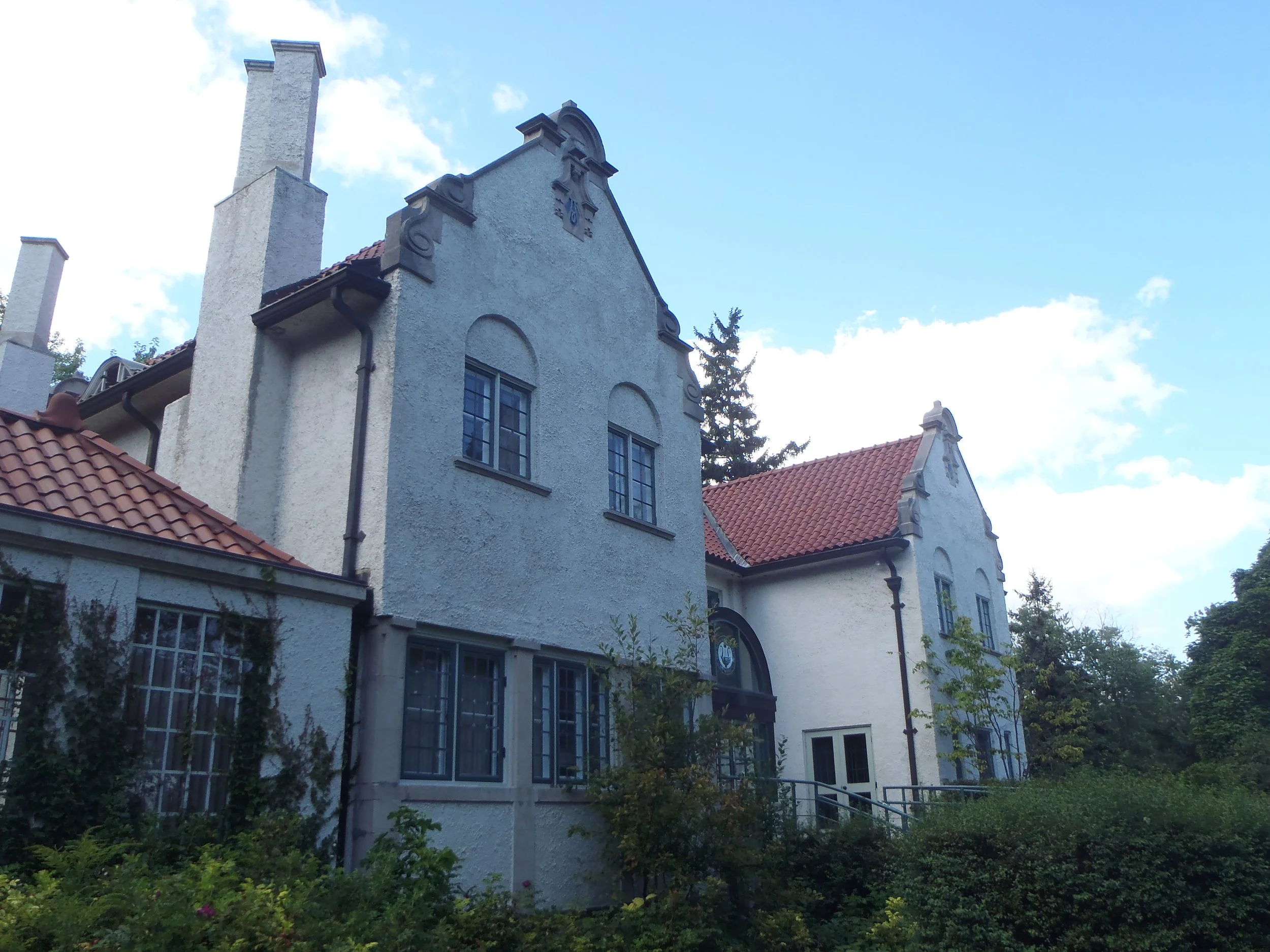Mississauga, The Credits, and the “Roaring Twenties”
/Advertisement for Diamond Jubilee celebration, from The Port Credit News, June 17, 1927.
Cinemas, automobiles, radios and airplanes. Temperance, rum runners, bootleggers, flappers and jazz. Gambling dens, gangsters and roadhouses. The 1920s seemed to usher in a new modern age. Rising from the ashes of Victorian and Edwardian eras and the trauma of the First World War and the Spanish Flu pandemic, historic Mississauga was not without its own extravagant connections to this time of confluence between the fading world of old money, the “relics of old decency”, and the new money moving out from the city and building gilded estates of their own – as well as searching for ways to enjoy their new wealth.
Percy Parker with Maggie, Ida and Ruston at Riverwood with William Lyon Mackenzie King, 1925.
Just as the old-world grand houses of Magrath’s “Erindale”, Mercer’s “Mercer Hall”, Parker’s “Claire House” and “Harbourne House”, and Ross’ “Brookside Hill” were fading from memory, new lavish estates, and families, came to call historic Mississauga home. Reflecting the affluence of the age, historic Mississauga welcomed Percy Parker’s “Riverwood” (1919), Adamson’s “Grove Farm” (1920), Fasken’s “IALFA” (1921), R.Y. Eaton’s “Glen Ireton” (1923), Cawthra’s “Lotten” (1926), Huston’s “Riverbend” (1927), Evans’ “Glen Erin Hall” (1927), J.P. Bickell’s “Arcadia” (1929), and more. Many remain landmarks within our city today.
Grace Cawthra and Harry Elliot, 1921.
The marriage of socialite Grace Cawthra and Major-General Harry McIntyre Elliot in 1921, and the affluent wedding of Margaret Kerr Parker and Geoffrey Thomas Somers in 1928, were grand social affairs that garnered a great deal of attention, both locally and in newspapers.
A newly built Clarke Memorial Hall opened in 1922 in Port Credit, soon becoming a social gathering place and a celebrated event venue for surrounding community. Residents of historic Mississauga also enjoyed outings, via the radial railway, to Eldorado Park in Brampton. Excursions to Toronto Island were also popular. Parkdale Theatre, near Sunnyside in Toronto, opened in 1919. Local newspaper advertisements highlighted the theatre to local residents, showcasing both early movie, cinema and live theatre performances. Clarke Hall in Port Credit, and the Odd Fellows Hall in Streetsville also played host to movies, live theatre and music performances through the 1920s.
Parker-Somers Wedding, Riverwood, 1928.
At the same time, several establishments and houses of gambling and vice rose to meet the demand here in the wilds of historic Mississauga. The “Miami Club”, “Chicory Inn” and “Moody’s Roadhouse” all opened welcomed paying customers into their nefarious confines.
This new “Jazz Age” influenced Canadian society, bringing new music, fashion, and lifestyles. Women gained more rights, including the right to vote and the recognition of their status as “persons” in 1929. Culturally, the 1920s in Canada was also a time of artistic expression, with celebrated movements in literature, visual arts, and music. The Group of Seven, a collective of Canadian landscape painters, gained prominence during the 1920s, with their collective works, including painting in Meadowvale Village, reflecting the country’s natural beauty and identity.
Adamson Estate.
The 1920s also saw William Lyon Mackenzie King elected Prime Minister and serving for most of the decade. Ida and Percy Parker of Riverwood entertained King at their property here in Mississauga in 1925. Locally, historic Mississauga (Toronto Township) was led by Reeves Edward Orr (1920-1922), Leslie Pallett (1923-1925) and John Jamieson (1926-1929), who all supported growth and welcoming new industry into historic Mississauga.
Clarke Memorial Hall, Port Credit.
The 1920s also saw a rise in Canadian identity, with an increasing focus on Canadian celebrations and history. 1927 marked the golden jubilee (60th anniversary) of Canadian Confederation. The celebrations were full of both nostalgia and optimism for the future – a mix if 19th century values and 20th century progress. A local Jubilee Celebration was held at the Cooksville Town Hall on Saturday, July 2, 1927, marking the golden jubilee for both Canada and Peel.
Riverwood Parker-Chappell Estate.
The “Roaring Twenties”, were a transformative decade marked by economic prosperity, cultural change, and a growing sense of national identity. It was characterized by a shift in social norms and cultural expressions – something that played out across historic Mississauga.
For 2025, The Credits awards gala is themed on the “Roaring Twenties” – think the Great Gatsby meets Mississauga! Step back nostalgically to a time of opulence and excess, to the gilded age, when the impossible seemed possible, and where grand social galas were par for the course.
The Credits are an annual awards gala from Heritage Mississauga that honours members of the Mississauga community for their contributions and achievements with a celebration of our community heritage. Heritage Mississauga has recognized “Heritage Heroes” in the community for over 25 years, presenting The Credits gala for the last 12 years. This year, The Credits takes place on Thursday, November 6, 2025 at the Mississauga Grand Banquet and Event Centre. For more information and for tickets, please visit: https://heritagemississauga.com/the-credits/


















